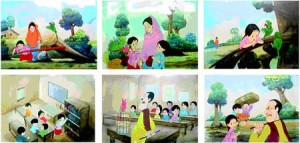Ram Mohan, the legend and doyen of Indian animation, with nearly 60 years of involvement with the animation industry has played a significant role in the evolution of animation in India. With over a hundred films to his credit, his contributions span a wide spectrum of work across the areas of 2D classical animation, 3D computer graphics animation to cinema and live action.
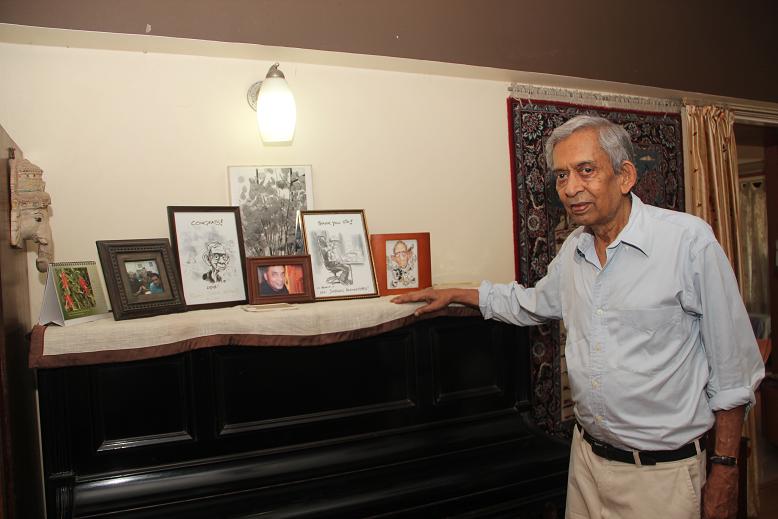 Having graduated in Science and giving up post-graduate studies to join the Cartoon Films Unit, Films Division, government of India in 1956. He received training in animation techniques from Clair H. Weeks of Walt Disney Studios, under the US Technical Aid program.
Having graduated in Science and giving up post-graduate studies to join the Cartoon Films Unit, Films Division, government of India in 1956. He received training in animation techniques from Clair H. Weeks of Walt Disney Studios, under the US Technical Aid program.
AnimationXpress.com’s Sidharth Iyer recently met up with the ‘Father of Indian Animation’ to know more about his journey, his tryst with animation, current state of the industry and what keeps him busy these days.
Excerpts:-
How did animation happen to you? Were you always keen on it?
Well I didn’t even know that one could get into animation, even as I was just about completing my graduation in Physics in Bangalore. At that point of time animation as an industry did not exist and it was not a very normal choice as a career. I happened to come to Bombay after completing my BSc. to pursue further studies, and when I was looking out to start off my career I came across an advertisement from the Ministry of Information and Broadcasting that they were setting up a studio in Bombay and required people to work under the senior animator from Walt Disney Studio Clair Weeks on a project.
At first I just wanted to meet Weeks, but then I didn’t have any aspirations of getting into animation. The work profile required a background in fine arts, but I was just a passionate cartoonist and wanted to show my work to Weeks. He loved my work and wanted me on board, that’s how my journey in the field of animation commenced.
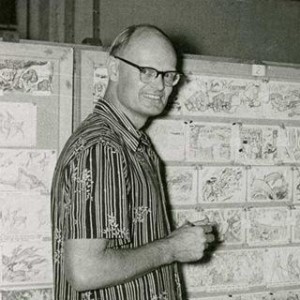 How was the experience working alongside Clair Weeks? What were the take aways?
How was the experience working alongside Clair Weeks? What were the take aways?
It was a really unique experience for me as everything was new for me. Having no background in animation, even the use of a light-box was something really different for me, Weeks was kind enough to teach me things from the scratch as there was no one else apart from him who had the knowhow of how to operate these tools.
But, I would like to say that while working with him on a pilot project called the banyan deer based on the Jataka story, so that was really when I learnt how animation works. He was in India for nearly two and a half years and during that period I learnt the fundamentals of classical animation from him.
Further on I was associated with the film division of India, where I started out as an illustrator and focused on storyboarding among other things and worked on many productions in my nine year stint. I became more confident of my own talent with the different experiences and the various projects that I worked on in that time.
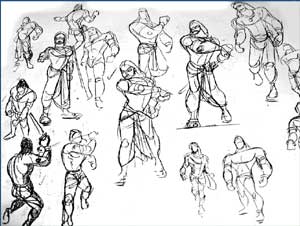 Describe your experience of working with the films division. Do you still recollect those days?
Describe your experience of working with the films division. Do you still recollect those days?
I always think back and believe it was a good start for me to begin my career in animation with the films division as we were primarily working on public service films and there various programs being introduced by the five year plans. This really helped my social communication skills as well through the use of animation. The stint with the films division really helped me hone my skills and at the same time gave me freedom to experiment with different elements of animation.
Care to share your thoughts on the evolution of animation from the 1960s to today’s animation?
The time, at which I started out in animation, it was a very slow and laborious process, requiring many hundreds and thousands of drawings made by hand. Though it was a tedious and tiring project it was always rewarding to see the end product after burning the midnight oil for days together.
Gradually, processes and tool s came into play to ease out the way animation is done, and with the introduction of various softwares the process is much faster than before. By the time I started out working independently I had started using the ink and paint program, but for me animation will always remain a pencil and paper job and I just love all the elements involved in the making of an animation film, short video or advertisement.
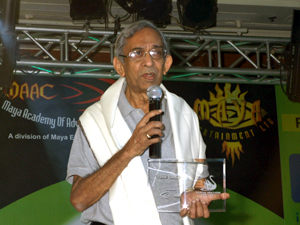 You also dabbled with working independently, how was that experience?
You also dabbled with working independently, how was that experience?
I got a chance to step into the private sector way back in 1968, when Prasad Productions based in Madras had acquired an auxiliary animation stand and an optical printer, and they wanted me to help them out in setting up the studio out there. But, I told them that it wouldn’t be possible for me to come over to Madras so they were kind enough to bring the equipment to Bombay and set it up in Tardeo, where the film centre was located then.
After about four years, I thought of doing something on my own and thus, Ram Mohan Biographics came into existence. I am really proud of the work that we did there, for almost 25 years till around 1997, after which I collaborated with Ronnie Screwvala for UTV Toonz with the idea to do a lot of outsourced work and did a lot of work with studios from Canada and US.
The other thing that I really enjoyed during this time was the fact that I got to train nearly 300 plus artists on how to do some of the best work in this field and that was very enriching. When I look back, though we didn’t create any original IP, we got to learn a lot from how the studios abroad work and use those techniques here in India.
Is there any one character from the many that you have created, that’s close to your heart?
The first character that I created was back in 1990, which was also considered as the birth of the decade of the girl child in India. The character I am referring to is Meena, which was for UNICEF, but the film was not only meant for India but also in neighboring nations like Pakistan, Bangladesh, Nepal and Sri Lanka.
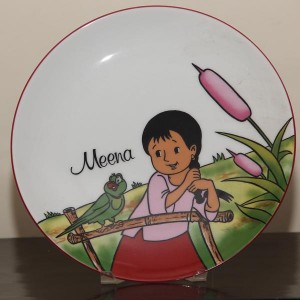 This character was later used in many films and mostly used to drive across a social message across all demographics. The series was well received in all the countries as well and that was really gratifying.
This character was later used in many films and mostly used to drive across a social message across all demographics. The series was well received in all the countries as well and that was really gratifying.
What is the difference between CGI and classical animation? Can they co-exist?
When CGI was first being used by our artists, many complained that if seemed to look very robotic in nature and it was missing the aesthetics. Whereas, classical animation has a lot more flexibility and fluidity in the imagery drawn or presented.
In recent years technology has really become very advanced and people are now more conversant with the kind of tools that should be used to create good CGI. But, only a few studios abroad have managed to capture the kind of imagery created by the likes of Walt Disney. So there is still a long way to go.
Are there enough animation institutes in India? Are they equipped to impart the right education?
There are quite a few animation institutes that came up in the 1990s, but I believe they are turning out to be more of a commercial venture, there are only few institutes that are really doing a good job of teaching the things that are required by freshers who are steeping into the field of animation.
Also I truly believe that no one can pick up skills in the field of animation by doing a one or two year diploma or degree course, animation is an ever evolving process. One has to put in number of years before claiming to be a good animation artist, also certificates are meaningless at the end of the day if you don’t have a great portfolio of work to showcase.
Among the Indian institutes that are actually doing well for the sector are: National Institute of Design (NID) based in Ahmedabad and Industrial Design Centre (IDC) in Mumbai, I have seen the students there and they are doing some really great work; I am confident that we will have a good bunch of animators coming from these institutes.
Where do you think the animation industry stands currently? Can we be global leaders in animation?
In the millennium (year 2000) when people were predicting about what it means for the media and entertainment industry, animation was touted to be among the most explosive genre among them. The industry is still evolving and relatively younger as against its allies, but still I believe that we haven’t really reached the point where we should have been at this point of time.
There are a few reasons that come to mind like: the initial studios that were set up and still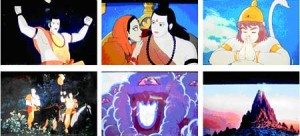 quite a few of them are more interested in earning foreign exchange by taking on outsourced work, rather than creating something in-house. The only issue here is the kind of work which is outsourced to us doesn’t allow our artists to think, its more routine work, thus eclipsing their creative skills.
quite a few of them are more interested in earning foreign exchange by taking on outsourced work, rather than creating something in-house. The only issue here is the kind of work which is outsourced to us doesn’t allow our artists to think, its more routine work, thus eclipsing their creative skills.
What we need is motivated individuals, who are well qualified and having a strong foundation in fine arts as it will be helpful to learn the aesthetics of animation art design right from the time of getting into the field of animation. Even with the availability of advanced technology, our animators lack the right vision and execution skills to get the optimum result whilst creating a character, so all that will change once we strengthen our foundation.
What is needed for an Indian character to travel across the globe, similar to that of say a Japanese anime, what’s lacking?
For a character to become globally recognized and loved, it first needs to be accepted by the country of origin with open arms… That is something that has never happened in our country and which is a sad fact. And we are only the ones to blame for this treatment, as our audience – the movie going public – can never really come out of their hardened shells of accepting animation; all they can do is go watch their favourite live action hero/heroine perform on screen, which is not bad but at the same time why should an animation film suffer? Even an animation film takes a lot of time and money to produce.
Also the Indian audience hasn’t evolved enough to accept moving drawings on screen, it requires one to really step into a world of imagination and experience the beauty of the character being portrayed on screen and experience the love, joy, sorrow and laughs along with the character, for the animation feature to really work. And it’s tough to believe that a country with such a rich tradition of art and sculptures can’t accept this medium of communication and embrace it.

